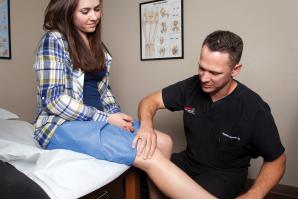Somewhere between board meetings, the kids’ soccer practice and family doctors appointments, women are ignoring an essential task: taking care of their hearts.
The statistics are deadly. Since 1984, more women than men have died from cardiovascular disease in the United States. Claiming about one life each minute, it’s the No. 1 killer of women in the country — more than cancer, Alzheimer’s and other diseases combined.
“Women tend to think of their husbands and families before themselves. They make sure everyone is taken care of, but they ignore their own symptoms,” says Doris Frazier, vice president of Cardiovascular Services at Mercy Heart and Vascular Institute of Greater Sacramento.
A study by the American Heart Association suggests that about half of all women won’t call 911 if they are having chest pains, but will call if they witness a family member with pain.
The medical community has shifted attention to women the past couple of decades, but statistics suggest more work is needed. The American Heart Association published the first women-specific recommendations for preventing cardiovascular disease in 1999, 15 years after women surpassed men in annual deaths. In 2002, the National Institutes of Health launched the Heart Truth campaign. Amparo Villablanca, director of the Women’s Cardiovascular Medicine Program for the UC Davis Health System, has been involved since the program’s inception.
“A central part of the campaign is the red dress as a symbol to inspire women to be aware of the importance of their heart health,” she says. “The campaign primarily targets women between the ages of 40 and 60, which is when heart disease symptoms typically become apparent.”
Every year, 55,000 more women than men have a stroke, likely because women live longer than men. And after age 65, a higher percent of women than men have hypertension, with the gap expected to grow with increases in life expectancy. The good news is that overall numbers are declining for men and women.
However, one group — younger women — is silently bucking the trend, as studies suggest death rates for coronary heart disease are rising for women ages 35 to 44.
Obesity and sedentary lifestyles contribute to the problem, but the medical community is still learning about symptoms and early warning signs for younger women. One study showed that half of gynecologists and one-third of internists surveyed didn’t know that tobacco use is the leading cause of heart attacks in younger women. Moreover, men historically outweigh women in clinical trials concerning cardiovascular disease.
“The past 25 years, significant advances in research have led to a recognition that women are not small men,” Villablanca says. “This has defined a number of important gender differences in all aspects of cardiovascular disease, including those that pertain to genetics, epidemiology, symptoms, outcomes, response to treatment, prognosis and medication side-effect profiles and efficacy.”
Last year, the American Heart Association updated its 2007 guidelines for cardiovascular disease prevention in women. Perhaps the biggest change to risk indicators was the addition of pregnancy complications, such as premature birth; gestational diabetes or diabetes surfaced during pregnancy; and preeclampsia, high blood pressure induced by pregnancy. Cardiovascular and metabolic stress can also be brought on by pregnancy, so complications during pregnancy can be used to predict a woman’s risk of heart disease years after giving birth.
Claiming about one life each minute, heart disease is the No. 1 killer of women in the country, more than cancer, Alzheimer’s and other diseases combined.
Other risk factors appear on the surface to be the same for men and women, but a closer look suggests differences, Villablanca says. For example, the thresholds for HDL, or good cholesterol, should ideally be greater than 50 in women, 40 in men.
“Furthermore, the impact of other factors, such as depression, can be greater in women both in cardiovascular risk, pre- and post-diagnosis, in part due to the greater prevalence of depression in women compared to men,” Villablanca says. Similarly, inflammatory conditions, such as lupus and rheumatoid arthritis, increase cardiovascular risk and are more prevalent among females.
How men and women distribute cholesterol plaque in their arteries also can lead to differences in detection, symptoms and, sometimes, treatment. Men have more focused areas of narrowing, while women suffer a more diffuse disease, or widespread damage to arteries, Villablanca says. Also, women are more prone to microvascular disease, which is located in the small heart arteries and isn’t detected on coronary angiograms.
“This leads to a number of challenges in diagnosis and treatment and underscores the importance of provider education in the gender differences of cardiovascular disease,” Villablanca says.
In terms of detection, traditional treadmill stress tests have limitations, including higher false positives in women. Villablanca suggests that stress echo imaging might be the best cost-value for a woman’s diagnostic test.
Women display different heart attack symptoms than men. For a man, it can feel like an elephant is sitting on his chest. For a woman, symptoms are atypical, such as sleeplessness, nausea and vomiting. These are easy to miss because they are symptoms of other diseases, Mercy’s Doris Frazier says.
“When women have a heart attack, they typically don’t have that crushing chest pain like you see in Hollywood,” Frazier says.
New studies and technology are in the pipeline to diagnose and treat cardiovascular disease, but the medical community agrees the best solution to combat this silent killer is awareness and prevention. Awareness of cardiovascular diseases has risen the past decade, yet many women still fear breast cancer more. In 2008, breast cancer killed about 40,600 women in the U.S., while cardiovascular diseases claimed nearly 420,000 women.
“Approximately half of all women still do not know that heart disease is the leading killer of women, and women often fail to link cardiovascular risk factors to their own cardiovascular disease risk,” Villablanca says. “Furthermore, women still underestimate their risk, falsely believing that their risk for breast cancer predominates.”
For the past few years Mercy has offered a screening program for heart and vascular health, but this year it launched a wider effort to target women. Mercy’s Heart Shaped Community aims to educate women through events in three areas: stress reduction, nutrition and exercise. The effort kicked off in February with a dancing event in Folsom, shortly followed by another evening of healthy cooking at Mulvaney’s B&L in Sacramento. Perhaps the biggest change in the new initiative is the involvement of gynecologists. Women see their gynecologists more than any other doctor, Frazier says, so it’s important that these doctors participate in cardiovascular health as well.
Local insurance provider Western Health Advantage doesn’t have awareness and prevention programs specific to women. Chief Medical Officer Don Hufford explains the differences between primary and secondary prevention, regardless of gender. Primary prevention targets people before they develop the problem: smoking cessation, exercise, healthy eating and weight management. Secondary prevention is after a patient starts to develop problems: high cholesterol, high blood pressure, diabetes and coronary artery disease.
Any prevention campaign or program brings its own set of challenges.
“It’s hard to know what’s going to motivate each individual,” Hufford says. “Maybe it takes firsthand experience of a friend or family member to have some issues or a problem.” Prevention programs, particularly at the primary level, are elective and up to the individual.
As Americans live longer and adopt unhealthy lifestyles, medical experts everywhere are predicting future health costs to skyrocket. The American Heart Association expects the direct medical cost of cardiovascular diseases to triple to more than $800 million annually by 2030. At Mercy, Frazier says she hopes the new prevention initiative will curb some of these costs because women also have influence over their family’s lifestyle.
“We all believe there is a tsunami of heart disease forming right now,” Frazier says. “In the pipeline, we have all these kids and adolescents at risk for heart disease because of nutrition and inactivity.”
Recommended For You

Avoiding the Pop
Why do so many women tear their ACL, and how can they prevent it?
In one of the crueler twists of sports, ACL tears often happen in freak accidents that you can’t really control. Seventy percent occur without contact. Even more cruelly, a woman is four times more likely than a man to tear the ligament — especially if she’s young and active.

Angels for Hearts
Sacramento nonprofit reaches region's tiniest heart patients
In 2004, 28-year-old Kimberly Kaufman learned she had congestive heart failure.



